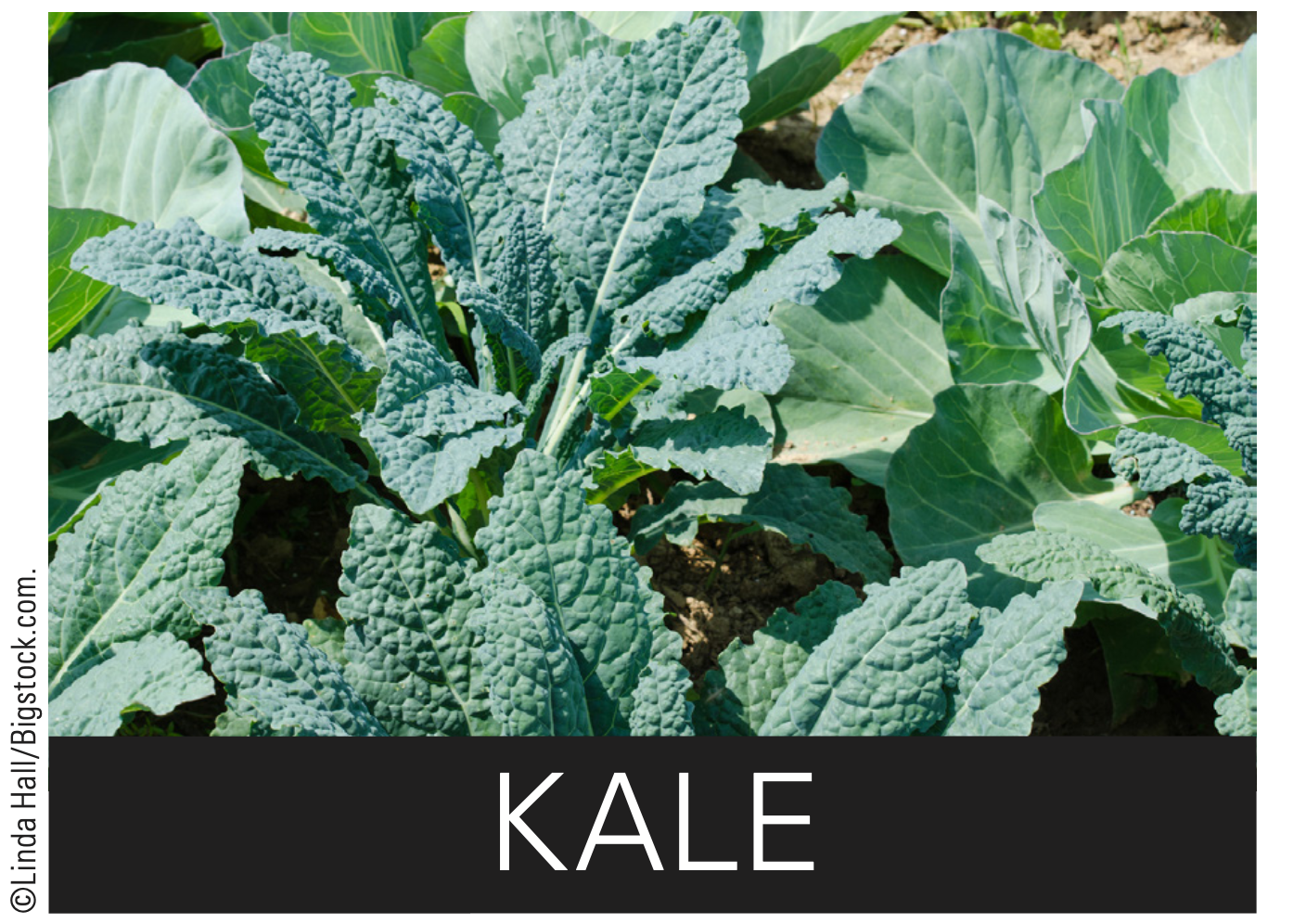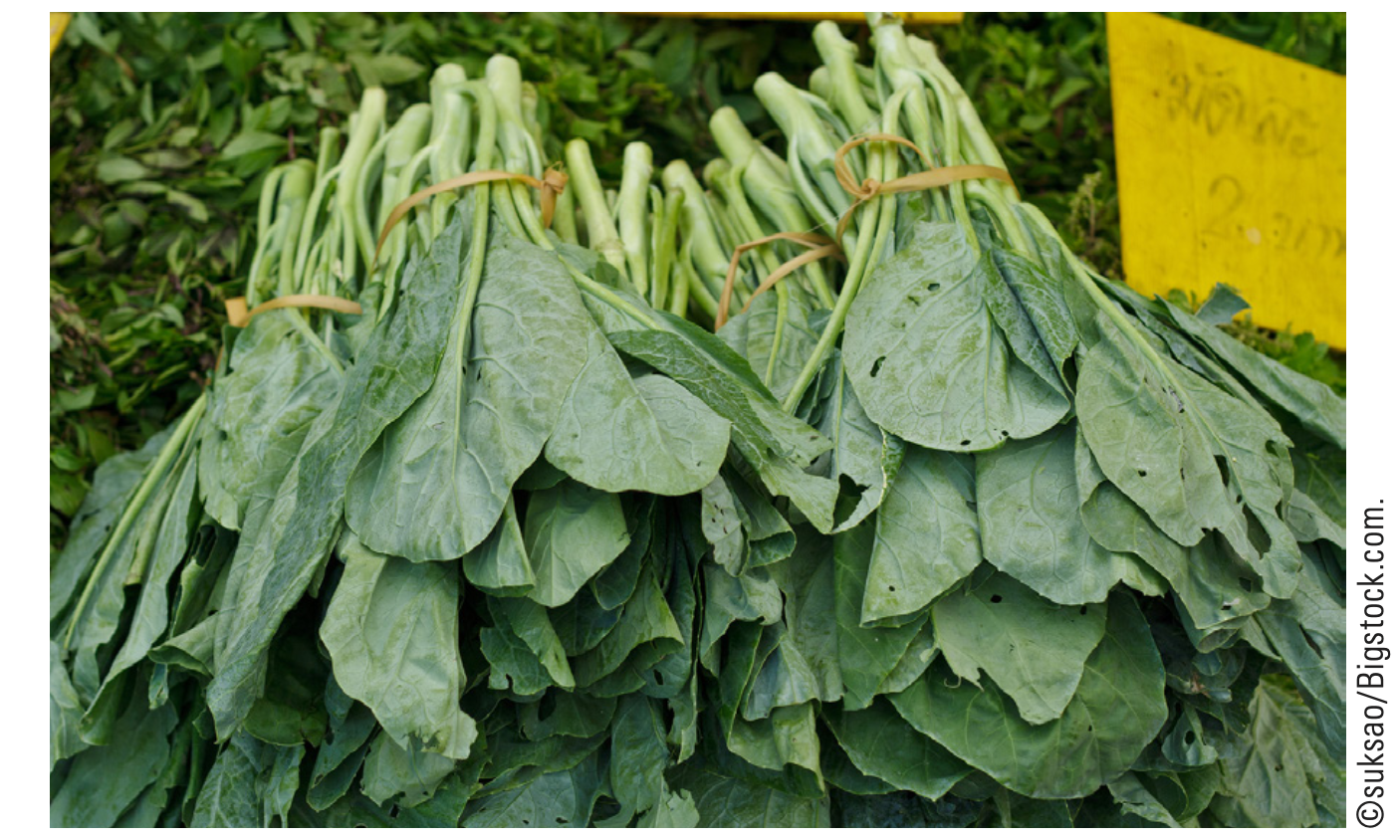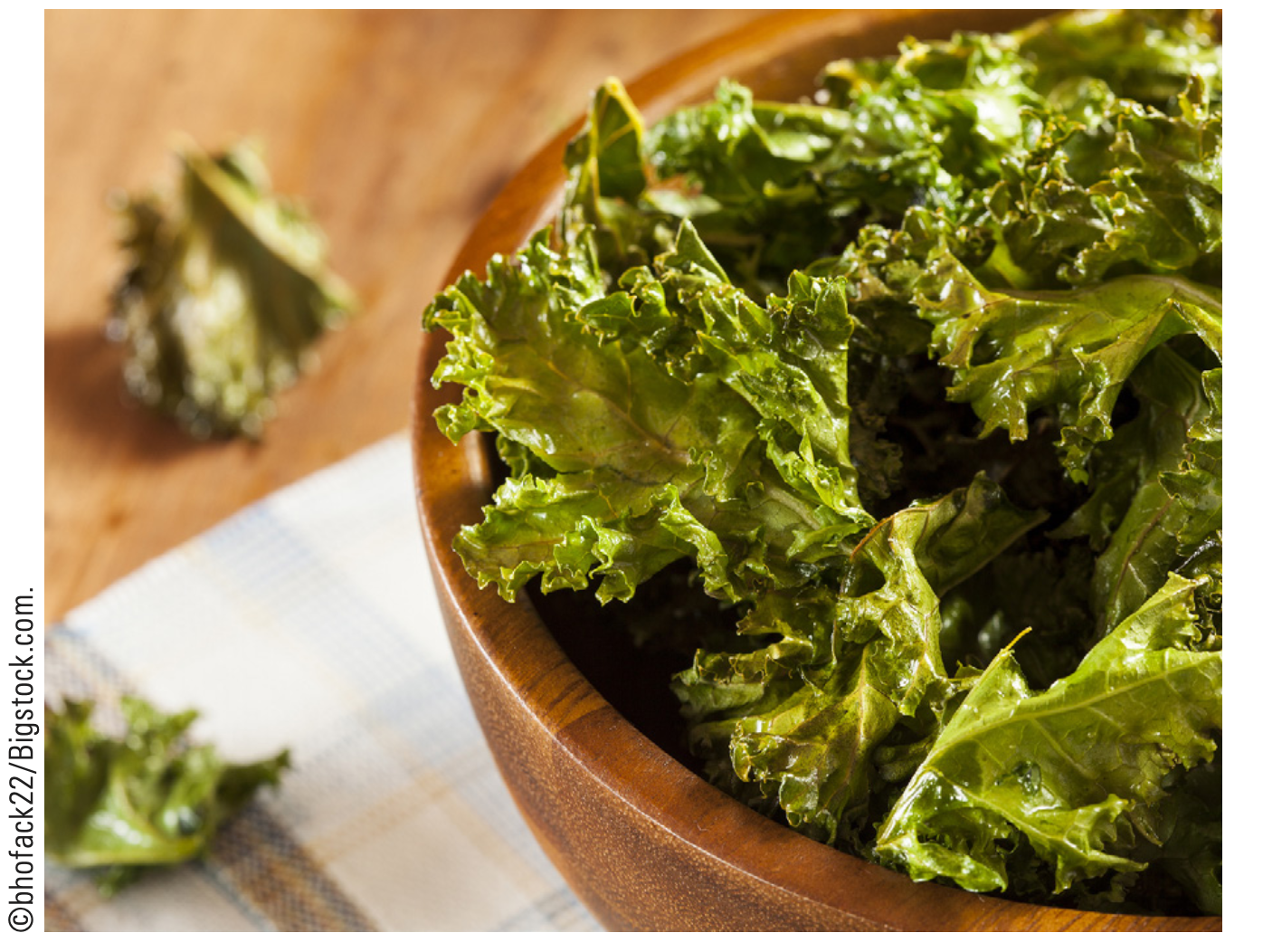

Often called the queen of greens, kale is rapidly gaining popularity because of its exceptional nutrient richness, health benefits, and delicious flavor.
Kale is one of the healthiest vegetables you can eat—one serving is both low in calories and packed with vitamins and minerals, including 200% of your daily Vitamin C requirement.
Growing1
When and Where to Plant
Kale is a leafy green, cool season crop. Grow it during early spring or fall for maximum yields and quality, but this season can be extended if desired. Plant four weeks before your last frost date in spring for a summer harvest and again six weeks before your first frost date in fall for an autumn and early winter harvest. Kale will grow in full sun to part shade.
How to Plant
Amend the soil with a 1- to 2-inch layer of compost. Leafy vegetables require quick, continuous growth for best quality. They especially need nitrogen for good color and tenderness. Sow seeds ½ inch deep and an inch apart, or transplant seedlings 6 inches apart in rows 2 to 3 feet apart. Thin seedlings to 1 foot apart. Mulch with a 2- to 3-inch layer of organic material, such as straw, to conserve moisture, keep the soil cool, and prevent weed growth.
Soil Requirements
Kale grows best in well-drained, fertile soil that is high in organic matter and has a pH of 6.0 to 7.5. It can tolerate slightly alkaline soil. Test the soil and amend according to recommendations at least seven days before planting. Kale prefers plentiful, consistent moisture. It can tolerate drought, but quality and flavor of leaves suffer.
Harvesting
Pick baby greens 20 to 30 days after seeding, and mature leaves 50 to 75 days after seeding. Wait until frost or cold weather for sweeter tasting leaves. To keep a plant producing, pick the big outer leaves and let the center continue to grow. The tender young center leaves are fine in salads. The chewier larger older leaves are best steamed, sautéed, or cooked like cabbage. Fresh greens can be stored for up to one week in the refrigerator.
Recommended Varieties
- Improved Dwarf Siberian (50 days) has dark green frilly leaves and is very cold tolerant.
- Red Russian (50 days) has purple stems and purple-veined flat leaves that are more tender than the frilly kale.
- Redbor hybrid (55 days) has highly attractive frilly burgundy red leaves that get darker with cold weather.
- Toscano (65 days) is a dinosaur, or laciniata-type, kale with long thin puckered dark green leaves that tolerate heat and cold.
- For additional recommendations visit http://vegvariety.cce.cornell.edu/.
Purchasing2
- Choose dark colored kale bunches with small to medium leaves. Avoid brown or yellow leaves.
- Store kale in a plastic bag in the coldest part of the fridge for three to five days.

Preparing2
Kale is usually cooked to soften it before eating, though you can shred some of the more tender small leaves and add them to salads. The stems tend to be tough, so you may want to remove them before use. The leaves are easier to purée without stems.
Freezing3
Choose young, tender green leaves. Wash thoroughly and remove woody stems. Water blanch for 2 minutes. Cool, drain, and package, leaving ½ inch headspace. Seal and freeze.


Recipes
Garden Frittata Recipe2
Preparation Time: 25 minutes
Serves: 4
Ingredients:
- 4 large eggs
- ¼ tsp. ground black pepper
- ¼ tsp. salt
- 2 medium unpeeled red potatoes
- ½ Tbsp. olive oil
- 1 bunch kale, approx. 6 oz.
- ¼ cup chopped onion
- ½ red bell pepper, chopped
Beat eggs, pepper, and salt in a large bowl; set aside. Microwave potatoes until slightly soft, but not completely cooked, then cube. (Alternate method without microwave: cube potatoes and boil 5 minutes until slightly soft; drain.) Chop remaining vegetables while potatoes cool. Mix vegetables together. Heat oil in a 10-inch non-stick skillet. Sauté vegetables for 5 to 8 minutes; add to eggs and mix well. Pour egg-vegetable mixture into the same skillet. Cook over low to medium heat until eggs are almost set, about 8 to 10 minutes. Cover and let sit until eggs are completely set, about 5 minutes.
Potato, Black Bean and Kale Skillet Recipe2
Preparation Time: 30 minutes
Serves: 4
Ingredients:
- 4 potatoes
- 1 bunch kale, approx. 6 oz.
- 2 Tbsp. olive oil
- 1 garlic clove, minced
- 1 tsp. chili powder
- ¼ tsp. salt
- ⅛ tsp. cayenne pepper
- 1 15-oz. can no-salt-added black beans, drained and rinsed
- ½ Cup plain non-fat Greek yogurt
Dice potatoes into ¼-inch pieces. Chop kale. Heat oil in a large skillet over medium heat. Add garlic and onions; cook 2 to 3 minutes until just starting to brown. Add diced potatoes, chili, salt, and pepper to skillet, cover with lid and cook 8 to 10 minutes, stirring occasionally. Add chopped kale and black beans. Cook about 3 to 5 more minutes, stirring gently. Serve with Greek yogurt.
Kale with Raisins2
Preparation time: less than 30 minutes
Serves: 6
Ingredients:
- 12 cups chopped kale (about 3 bunches)
- 1 ½ Tbsp. oil
- 3 cloves garlic, chopped
- ¼ cup water
- ⅛ tsp. salt
- ⅛ tsp. pepper
- 2 Tbsp. raisins, chopped
Wash kale well and trim tough stems. Pile several leaves together and slice into ribbons about 1 inch wide. Heat a large, dry skillet and toast chopped nuts for 3 to 5 minutes until fragrant, stirring frequently. Set aside to cool.
Heat oil in the same skillet and sauté garlic for 1 minute until soft—do not brown. Add kale ribbons and ¼ cup water and cover. Cook over medium heat until soft—10 to 15 minutes—adding more water if necessary.
Add salt, pepper, nuts, and raisins and stir to combine. Allow remaining liquid to evaporate. Serve.
Top 10 Ways to Enjoy Kale2
- With Your Favorite Noodles- soba, fettuccine, or rice noodles. Add chopped kale when pasta is about 5 minutes from being done. Season with a small amount of sesame oil, sesame seeds, and salt.
- Quickie Kale Salad. Toss canned sliced beets with cooked fresh or frozen kale, 1 to 2 chopped scallions, and a grated carrot. Top with low-fat balsamic vinaigrette.
- Sweet and Irresistible. Sweeten your kale with raisins and nuts.
- One-Pot Meal. Braise kale in chicken or vegetable stock. Add garlic that has been sautéed in olive oil before adding stock and kale.
- Steamed and Tangy. Steam kale and season with lemon juice, olive oil, salt, and pepper.
- Stir-Fry. Add chopped kale to a stir-fry.
- Veggie Sauté. Sauté diced potato, acorn squash, mushrooms, and onion in a small amount of olive oil until tender. Add chopped kale (tough stems removed) and cook until wilted. Season with sage.
- Soups. Add chopped fresh or frozen kale to vegetable or bean soups.
- Kale Chips. Drizzle chopped fresh kale with olive oil (tough stems removed), sprinkle with seasoning, and bake on a cookie sheet until crisp.
Sources
1 NC Cooperative Extension Gardening Portal. Accessed June 2015. http://gardening.ces.ncsu.edu/.
2 Fruits and Veggies—More Matters®. Accessed June 2015. http://www.fruitsandveggiesmorematters.org.
3 National Center for Home Food Preservation. Freezing Greens (Including Spinach). Accessed June 2015. http:// nchfp.uga.edu/how/freeze/greens.html.
Acknowledgements
The authors wish to express appreciation to Chris Gunter, Rachel Herring, Debra Ireland, Issac Lewis, Chantel Lumpkin, and Karen Neill for their assistance in preparing this publication.
Nutrition Facts
Serving Size 1/2 cup cooked (65g)
Servings Per Container
Amount Per Serving
Calories
20
% Daily Value*
Total Fat 0g
0%
Saturated Fat 0g
0%
Trans Fat 0mg
0%
Cholesterol 0mg
0%
Sodium 15mg
1%
Total Carbohydrate 4g
1%
Dietary Fiber 1g
4%
Sugars 1g
Protein 1g
Vitamin A 180%
•
Vitamin C 45%
Calcium 15%
•
Iron 4%
*Percent Daily Values are based on a 2,000 calorie diet. Your daily values may be higher or lower depending on your calorie needs:
Calories:
2,000
2,500
Total Fat
Less than
65g
80g
Saturated Fat
Less than
20g
25g
Cholesterol
Less than
300mg
300mg
Sodium
Less than
2,400mg
2,400mg
Total Carbohydrate
300g
375g
DietaryFiber
25g
30g
Calories per gram:
Fat 9
•
Carbs 4
•
Protein 4
Source: Fruits & Veggies—-More Matters®.
- Compiled by
- Extension Master Gardener Volunteers,
Guilford County - Linda G. Brandon, Extension Master Gardener Volunteer,
Guilford County - Jeannie Leonard, Family Consumer Science Agent,
Davidson County - Lucy K. Bradley, Associate Professor and Extension
Specialist, Department of Horticultural Science,
North Carolina State University - Published by
North Carolina Cooperative Extension Service


North Carolina State University and North Carolina A&T State University commit themselves to positive action to secure equal opportunity regardless of race, color, creed, national origin, religion, sex, age, veteran status, or disability. In addition, the two Universities welcome all persons without regard to sexual orientation. North Carolina State University, North Carolina A&T State University, U.S. Department of Agriculture, and local governments cooperating.